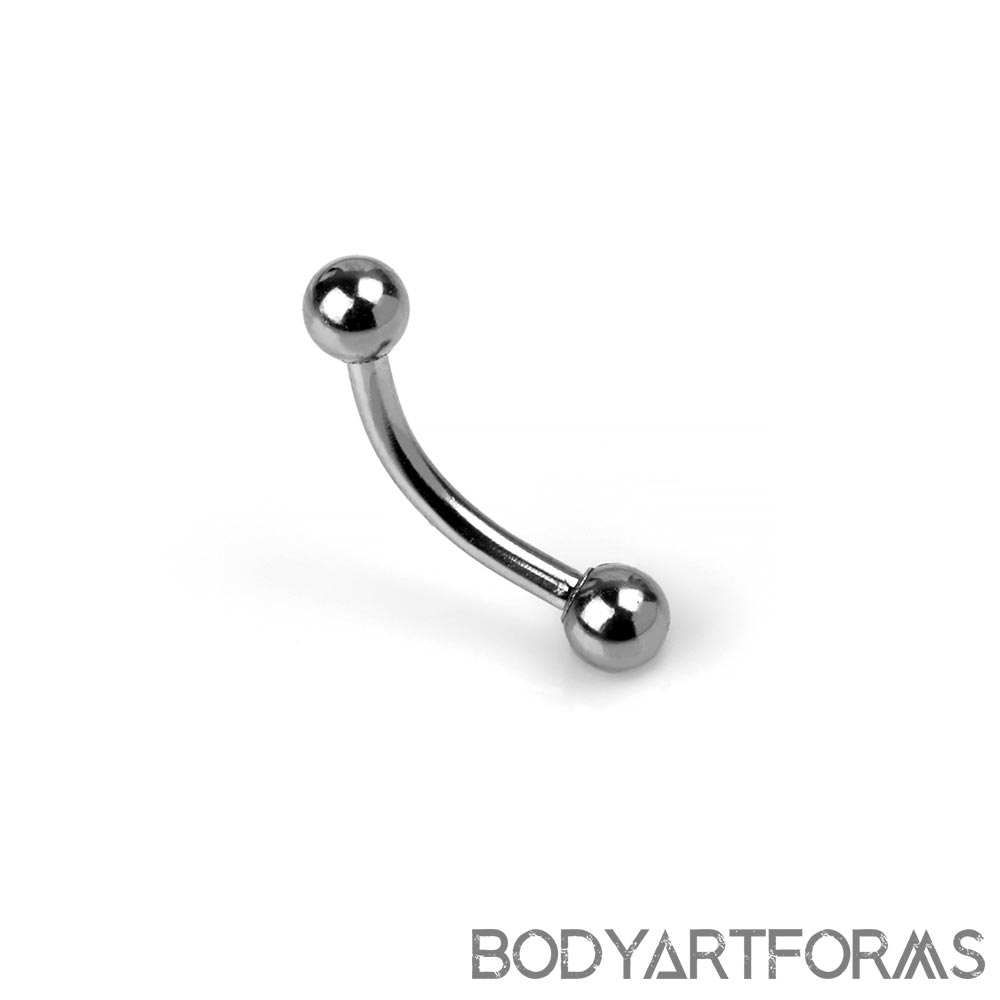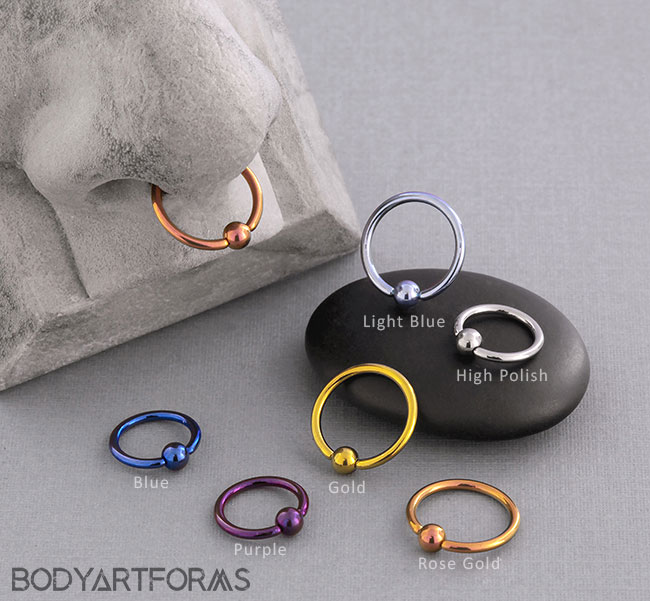If you’re curious about genital piercings and looking for something unique, the fourchette piercing might be just what you’re looking for! This type of piercing isn’t as well-known as a Christina piercing, but it has its own appeal.
Whether you’re exploring fourchette piercing benefits, wondering about fourchette piercing pain, or just looking for fourchette piercing jewelry options, our guide has everything you need to know.
JUMP TO
- What’s a Fourchette Piercing?
- Getting the Piercing
- Fourchette Piercing Pain
- Fourcehtte Piercing Benefits
- Cost of a Fourchette Piercing
- Fourchette Piercing Healing Time
- Fourchette Piercing Aftercare
- Fourchette Piercing and Sex
- Types of Fourchette Piercing Jewelry
- Who Shouldn’t Get this Piercing?
- Frequently Asked Questions
What is a Fourchette Piercing?
A fourchette piercing is a female genital piercing that goes through the thin piece of skin at the back of the vaginal opening, known as the fourchette, where the labia minora meet. The piercing is placed vertically, making it more comfortable and practical.
This piercing can only be done if you have enough skin in that area. If you have a midline tear or episiotomy, which can occur during childbirth, you won’t be able to get this piercing due to the scarring.
Although the fourchette is not as common as other hood piercings, including the horizontal clitoral hood piercing or vertical clitoral hood piercing (VCH), it’s just as beautiful and empowering as other genital piercings. The fourchette piercing purpose varies—some get it for its visual appeal, while others believe it adds to their pleasure in bed.
Origins of the Fourchette Piercing
Fourchette is French for ‘little fork’ and also refers to the specific location of this piercing. While genital piercings have existed for centuries in different cultures, the fourchette piercing is a more modern addition to the lineup.
Professional body piercer and industry expert Elayne Angel is often credited with refining this piercing in the 1990s. Through personal experimentation—getting pierced three times in different spots—she developed what is now considered the standard placement for a fourchette piercing.
Getting the Piercing
Not everyone has the right anatomy for a fourchette piercing, so a consultation with an experienced piercer is a must. They’ll check to see if you have pinchable skin to support the piercing and that there’s a defined ridge of tissue in the area. If there’s scarring from childbirth or other factors, this may not be the right choice for you.
Even if there is enough tissue, the ridge must be large enough to allow approximately 3/8″ of elevation between the piercing and the edge of the tissue. The piercing needs to sit at the base of the natural fold. Attempting to create a fourchette piercing on insufficient tissue or piercing too deep can lead to migration and complications.
If you are a suitable candidate, the piercer will clean the piercing site. Some piercers prefer using tools like forceps or a needle-receiving tube, while others may freehand the piercing. The initial jewelry used will depend on your anatomy. Typically, a curved barbell, at a 12g or 10g, with a length of 3/8″ or longer, is used.
High-quality materials like implant-grade titanium are ideal for minimizing irritation and promoting smooth healing.
Getting ready for your piercing appointment:
- Get a good night’s rest and eat a well-balanced meal.
- Shower beforehand to keep the area clean. If needed, bring fresh wipes for a quick refresh.
- If your pain sensitivity is higher during your period, you might want to schedule around it.
- If you’re someone who likes to depilate, consider doing it before getting pierced. You may not be able to depilate until after the piercing heals. For example, you don’t want the skin getting pulled during a Brazilian wax.
- Bring a panty liner or pad in case of bleeding.
- Wear loose-fitting clothing to prevent irritation.
Fourchette Piercing Pain
It’s a genital piercing, so it’s going to hurt. Fortunately, the piercing goes through a thin tissue of skin, so it’s not as intense as other genital piercings. Some say it’s less painful than other outer labia piercings or a Princess Albertina piercing.
Pain levels vary from person to person, but most people describe the fourchette piercing pain as a sharp pinch with the discomfort usually fading away within a few hours.
Fourchette Piercing Benefits
There are several fourchette piercing benefits to consider. Many people love the way it looks and appreciate the ability to wear such a unique and rare piercing.
As with genital piercings, the boost in confidence and sexual pleasure is what makes them so popular. During sexual activity, the piercing may enhance stimulation for both partners, making intimate moments more pleasurable.
Cost of a Fourchette Piercing
The cost of a fourchette piercing depends on the location and the piercer’s experience. Typically, the price of a fourchette piercing ranges from $65 to $150, not including the starter jewelry. If you search ‘fourchette piercing near me,’ you can reach out to piercers in your area to find out the exact price.
It’s important to choose high-quality jewelry like implant-grade titanium to help with a smooth healing process. You’ll also need aftercare products like saline spray, so make sure to budget for that as well.
Fourchette Piercing Healing Time
How long does it take to heal? Healing time for a fourchette piercing is usually between six to eight weeks. The healing period for this piercing is relatively short, but it will be uncomfortable due to the location.
Simply sitting can put pressure on the piercing, so you’ll have to be extra careful. Keep in mind that healing can take longer depending on how well you care for it and your body’s natural healing process.
Fourchette Piercing Aftercare
Due to its location, keeping this piercing clean is essential. Since it sits close to the anus, bacteria exposure is a real concern. It’s crucial to maintain excellent hygiene to prevent infection.
To help your piercing heal properly, follow these your piercer’s aftercare instructions. Generally, you’ll want to follow these aftercare tips:
- Always wash your hands before touching the piercing to avoid infections.
- Clean the area twice a day with a saline solution. Spray, let it sit and wipe away any excess.
- Leave the piercing alone. Don’t touch or play with the jewelry.
- Don’t sit on unclean surfaces if you’re not wearing any underwear.
- Shower daily to keep the area clean.
- Wear clean and breathable underwear and clothing to avoid trapping bacteria.
- Avoid tight clothing that rubs against the area.
- Keep the area dry. Wearing a liner or pad can add padding and help absorb excess moisture.
- Practice good bathroom hygiene—always wipe away from the piercing. If using wipes, avoid direct contact with the jewelry. You want to avoid fecal bacteria near your piercing!
- Refrain from physical activities that may irritate the piercing, such as biking and horseback riding.
- Hold off on sexual activity until fully healed.
- Avoid bodies of water that can cause an infection like pools, lakes, beaches and hot tubs.
Watch for signs of an infection and allergic reactions, such as redness, excessive swelling, substantial pain or unusual discharge. If you notice any issues, go to your piercer or doctor.
Fourchette Piercing and Sex
You should wait until your piercing is fully healed to resume any sexual activity, including self-pleasure or with a partner.
After healing, the fourchette may increase pleasure. Unlike the VCH piercing, it doesn’t target the clitoris, but some people feel more sensation during vaginal orgasms, masturbation, or daily activities.
The amount of sensitivity will vary from person to person, some people also report not feeling a big difference or change.
Since this piercing is positioned in a way that doesn’t put much pressure on the labia majora, it can be comfortable to wear once healed.
Types of Fourchette Piercing Jewelry
The starter jewelry for a fourchette piercing depends on your anatomy. Common jewelry choices include curved barbells and captive bead rings. These are usually 3/8″ or 7/16″ in diameter and 12g or larger. Your piercer will choose the best type of jewelry for your body.
Once the piercing heals, you can change the jewelry style or the ends. Because of the location, changing jewelry yourself is difficult. You’ll need to visit your piercer for help to switch the jewelry.
The fourchette requires a delicate balance with the jewelry. Since the piercing goes through thin tissue, the jewelry needs to be thick enough to avoid tearing.
The soft tissue also means that normal wear can lead to undesired stretching. If you notice stretching, talk to your piercer about switching to larger ends or changing to a captive ring.
Just be aware that larger ends mean heavier jewelry that can lead to more stretching, and rings might make penetration uncomfortable.
If you have any issues with the jewelry, talk to your piercer.


SHOP OUR FOURCHETTE COLLECTION HERE
Who Shouldn’t Get This Piercing?
The fourchette is a rare piercing that requires very specific anatomy. If you don’t have the right anatomy, you won’t be able to get this piercing. Don’t force it or try to find a piercer who will perform it as it’s a very delicate piercing.
Due to the piercing placement, keeping up with aftercare is crucial. If you’re not able to commit to the aftercare, you might want to reconsider this piercing.
Frequently Asked Questions
Does a fourchette piercing have a specific purpose?
As with most genital piercings, enhanced sexual pleasure is what makes them appealing. While some people get it for aesthetics, others believe it enhances sexual pleasure by increasing sensitivity in the area.
Plus, if you’re one of the lucky people who has the anatomy for this piercing, you have bragging rights! It’s a rare, sexy piercing that has the possibility to enhance pleasure in the bedroom. What more could you want?
Can I use any type of jewelry?
No, only certain piercing jewelry styles should be used. For this piercing, opt for a curved barbell or ring in high-quality jewelry materials, like titanium. Due to the sensitivity of the piercing, avoid jewelry types or materials that aren’t suitable for this piercing. Your piercer will guide you on the best type of jewelry to wear.
What risks are associated with a fourchette piercing?
Due to the piercing’s sensitive location, there is a risk of tearing and undesired stretching. Additionally, the proximity to the anus increases the risk of infection if proper hygiene and aftercare are not followed.
Can I get this piercing with a triangle piercing or other genital piercings?
Yes, some people choose to pair the fourchette piercing with other genital piercings, such as the triangle or Christina piercing, for aesthetic or pleasure-enhancing reasons. Talk to your piercer about what your ultimate piercing goals are so they can help you plan accordingly.
What should I do if my piercing gets infected?
See your piercer or a doctor if you notice signs of infection like redness, swelling, or discharge.
A fourchette piercing is a unique and beautiful type of piercing for those who are a good fit for it. If you’re considering it, make sure to visit an experienced piercer and follow proper aftercare steps to ensure smooth healing. And remember, please follow us on all our socials @Bodyartforms!
Leave a Reply